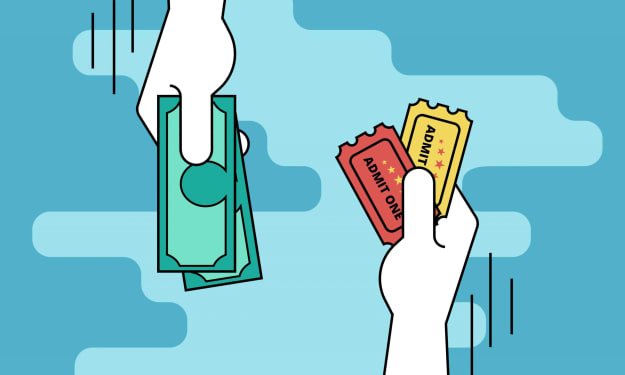Introduction to Foreign Exchange Market (Forex) For Beginners
101 to Forex Market

What is the Forex Market
The foreign exchange market, known as the forex or FX market, is the global market for trading currencies of different countries. The forex market is the world’s largest and most liquid financial market where trillions are traded daily.
The global FX market is organized as an over-the-counter (OTC) market based on credit relationships. It is therefore less transparent - meaning less "visible" to other market participants -than many other financial markets. It is a global network of markets connected by computer systems. In FX markets prices are quoted by FX brokers (broker-dealers) and transactions are negotiated directly with the buyers and sellers.
What is the Size of the Foreign Exchange Market?
The turnover in global foreign exchange markets reached $6.6 trillion per day in April 2019, according to the Bank of International Settlements (BIS) Triennial Central Bank survey conducted in 2019. It was up from $5.1 trillion per day in April 2016, displaying a return to the long-term upward trend in turnover recorded in each BIS Triennial Central Bank Survey since 2001.
The next survey showed a continued increase in FX turnover: global foreign exchange trading averaged $7.5 trillion a day in April 2022. It amounts to 14% increase from 2019.
Forex Market Structure and Types
The FX market is decentralized in a sense that no one single authority, such as an international agency or government controls it. The major players in the market are governments - usually through their central banks, then come financial intermediaries, followed by commercial banks, corporate exporters and importers, as well as individuals such as international travelers.
The rate that is agreed upon by the two parties in the exchange is called exchange rate. There are two types of exchange rates that are commonly used in the foreign exchange market.
The spot exchange rate is the exchange rate used on a direct exchange between two currencies “on the spot.” Spot trading has the shortest time frame, and for most currencies a spot transaction consists of a two-day settlement period.
The forward exchange rate is a rate agreed by two parties to exchange currencies for a future date, such as 6 months or 1 year. The main purpose of using the forward exchange rate is managing the foreign exchange risk.
Spot transactions and forward transactions comprise two out of three major FX transaction types dominating FX market by volume. In a spot transaction, two currencies are traded at the current exchange rate - the spot rate. In a forward transaction, two currencies are traded for a specific future maturity date at the forward rate.
The swap trade involves both spot and forward transactions. In a swap trade a currency is traded for another in a spot transaction, and at the same time it is bought back for a date in the future at the forward rate.
FX swaps and forwards accounted for the majority of FX market turnover since 2013, according to BIS. Their combined share of turnover rose from 54% in 2013 to 61% in 2016, and 64% in 2019. On the other hand, the share of spot trading fell from 38% to 30% over this period.
As of April 2022, the United Kingdom, the United States, Singapore, Hong Kong SAR and Japan – accounted for 78% of foreign exchange trading. The United Kingdom remained the most important FX trading location globally – accounting for 38% of global turnover. However, UK’s share declined from 43% in 2019.
What is Forex Trading and How Does It Work?
Now let’s see what is forex market and how does it work. A vast majority of trading in the forex market occurs between institutional traders such as people who work for banks, fund managers and multinational corporations. Estimates suggest retail trading - also known as trading by non-professionals - accounts for about 5.5% of global FX market.
All forex trades involve a currency pair. Currency pairs are traded by what’s known as a lot, or a standardized volume of currency. The typical lot size is 100,000 units of currency.
To facilitate trades given large lot sizes, brokers offer leverage to traders - another term for borrowing money. Leverage trading allows traders to borrow money and supplement their own funds to participate in the forex market without the amount of money otherwise required.
Leverage trading requires that traders put down some money upfront as a deposit – what is known as margin.
Advantages of forex trading
Low costs
Trading in FX market entails low costs - there are practically no commissions and hidden fees that traders have to pay for forex trading. Broker’s income is usually determined by the bid-ask spread - the difference between the bid (buying) and ask (selling) prices that he is willing to buy and sell the currency pairs for. And spreads are clearly published by brokers in real time.
Potential for Fast Returns
Currency exchange rates usually move fast. This allows traders to earns sizable returns on their money in forex trading compared with other markets where prices move slower and it takes longer to earn similar returns.
Leverage
Access to leverage allows to make substantial profit in FX trading. Depending on where they are operating from, traders may be able to obtain access to leverage of 100:1 and more, for initial capital invested as a margin in a trade.
Liquidity
The forex market is the largest by trading volume market in the world. And high liquidity means participants know large orders of currency trades can be easily executed without any large price deviations. High trading volume assures practical impossibility of price manipulation, thereby enabling tighter spreads that lead to more efficient pricing.
Disadvantages of forex trading
Volatility
Fast price movements in FX markets enable traders to earn high returns. However, at the same time higher volatility entails risk of higher losses when market moves against your trade.
No Central Regulator
Fx trading is carried out in over-the-counter market where buyers and sellers are connected via decentralized electronic networks and trades are not carried out on specific centralized exchanges. This means traders are operating in a market with less centralized oversight compared with trading on centralized exchanges. Therefore traders should choose their brokers carefully to make sure they have proven positive record and are trustworthy.
About the Creator
Ara Zohrabian
Ara Zohrabian, an author and an expert in fundamental and technical analysis. Currently he is a Senior Analytical Expert at IFCMarkets Corp.






Comments
There are no comments for this story
Be the first to respond and start the conversation.